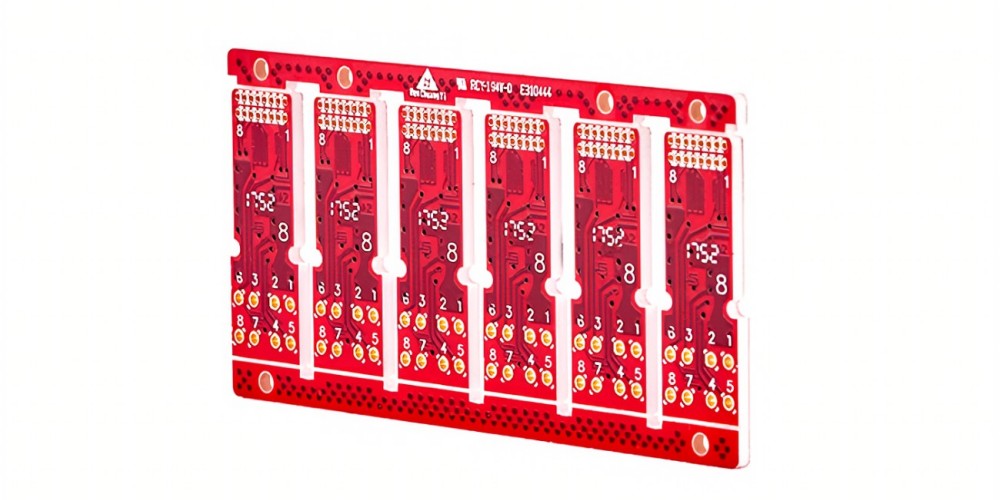Introduction
The dielectric constant (Dk) is an important property of laminate materials used in printed circuit boards (PCBs). It determines how a laminate interacts with electromagnetic signals and can impact the performance of high-speed digital and high-frequency analog circuits. Rogers RO4350B is a popular high frequency laminate with excellent dielectric properties. This article provides an overview of the dielectric constant specifications of RO4350B and discusses how it impacts circuit design.
Dielectric Constant of RO4350B
What is the dielectric constant?
The dielectric constant (Dk) indicates how much electrical energy from signals is stored in the laminate material as opposed to propagating through it. Materials with higher dielectric constants absorb more signal energy, leading to slower signal propagation.
Typical values
RO4350B has a dielectric constant of 3.48 at 10 GHz, as per Rogers specifications. The value varies slightly over frequency:
- At 1 MHz: 3.54
- At 10 GHz: 3.48
This makes it suitable for high frequency applications up to mmWave bands. The low Dk leads to faster signal speeds and lower loss compared to standard FR-4 (Dk = 4.5).
Consistency
The dielectric constant has very little variation (±0.04) over different tested lots of RO4350B. This consistency allows for repeatable performance across different PCBs.
Effect on Circuit Performance

The dielectric constant affects critical electrical parameters like impedance, propagation delay, and loss.
Impedance
A lower Dk allows higher impedance transmission lines for a given trace geometry. 50 Ohm transmission lines can be designed with wider traces and spacing.
Propagation Delay
Since velocity of propagation is inversely proportional to √Dk, the lower dielectric constant directly correlates with faster signal propagation through RO4350B. This improves timing margins in digital circuits.
Loss
Lower Dk also reduces dielectric loss, improving quality factor (Q) and insertion loss in passive RF circuits like filters and resonators.
Design Considerations
The properties of RO4350B must be accounted for in the PCB layout to take advantage of the benefits:
- Adjust line impedances based on IPC calculators
- Account for reduced delay in circuit timing analysis
- Utilize thinner substrates (5-10 mils) to further minimize loss
Proper modeling and characterization of Dk is critical for high frequency signal integrity simulations. Accurate values must be obtained from the material supplier.
Conclusion
The low and consistent dielectric constant of Rogers RO4350B makes it an ideal choice for controlled impedance and low loss at microwave frequencies. An understanding of how Dk impacts circuit behavior is necessary to optimize a PCB layout. Careful modeling ensures the electrical performance can be fully realized.
Frequently Asked Questions
What is a typical dielectric constant value for standard FR-4 material?
The dielectric constant of standard FR-4 laminates is around 4.5 at 1 MHz. This is higher than RO4350B’s value of 3.54.
How does dielectric constant affect signal wavelength?
Wavelength is inversely proportional to the square root of the dielectric constant. Therefore, the wavelength of a signal will be longer in RO4350B compared to FR-4 for a given frequency.
Can the dielectric constant be different in X, Y and Z axes?
Yes, some laminates exhibit anisotropic material properties. RO4350B has very little anisotropy, with maximum variation of ±0.04 across different axes.
Does the dielectric constant vary with temperature?
There will be a small change in Dk value with temperature. Rogers provides dielectric constant specifications over a wide range of temperatures. This data should be used for thermal analysis.
How accurate do I need to model the Dk in my simulations?
You should account for tolerances specified for the material by the manufacturer. For RO4350B, using the nominal value of 3.48 is reasonable since variations are very small.

Leave a Reply